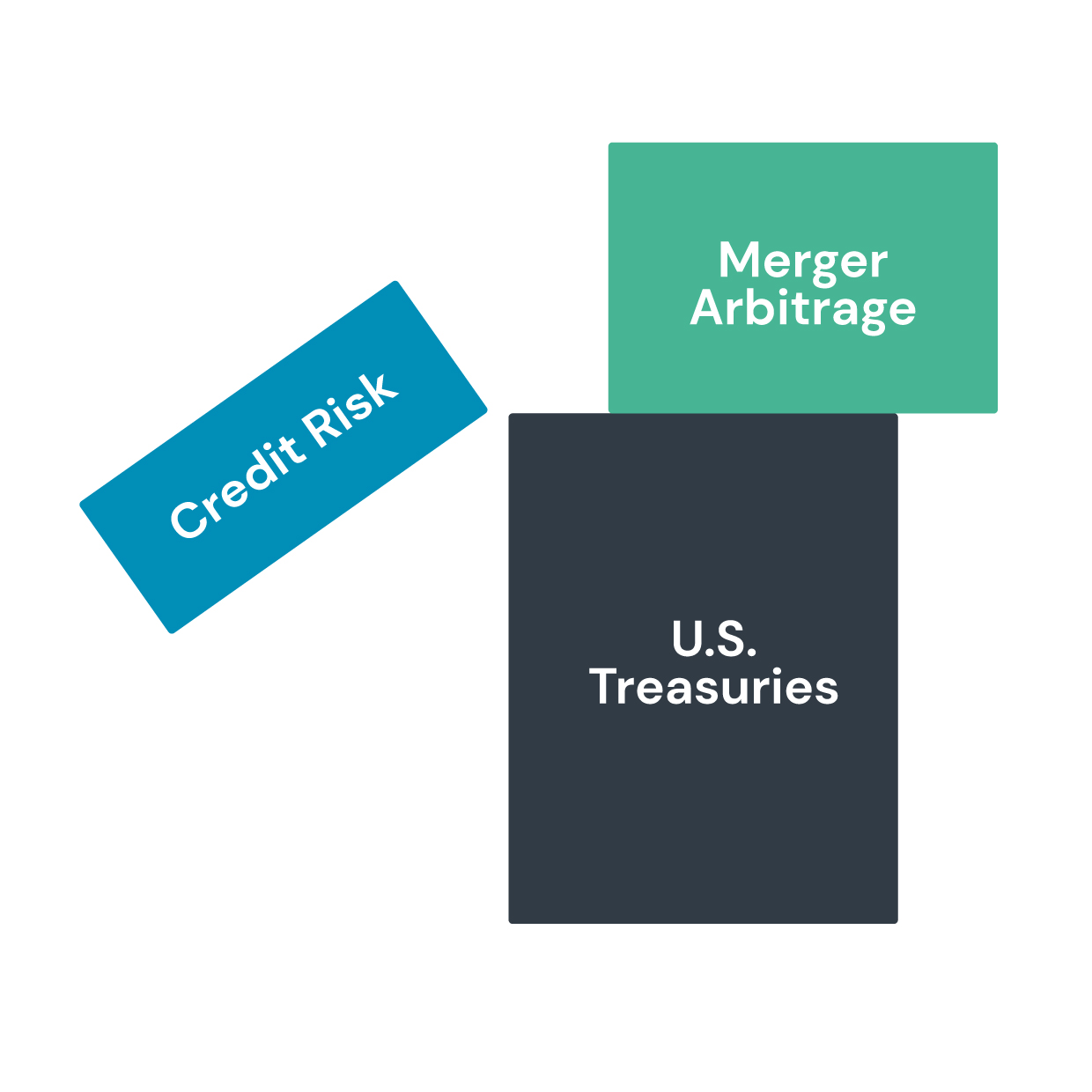Boosting Bonds: Stacking Merger Arbitrage to Enhance Fixed Income Portfolios
Overview
Our latest paper examines why traditional bond alpha has been hard to find and offers an innovative, capital-efficient structure that could be considered as an adjunct or replacement to traditional corporate bond allocations. The paper examines an overlay of merger arbitrage strategies onto traditional U.S. Treasury investments.
This approach seeks to preserve the fundamental safety and stability associated with core bonds while introducing a distinct, historically uncorrelated return stream, potentially improving overall portfolio performance.
Key Topics
Return Stacking, Merger Arbitrage, Fixed Income
Introduction
For most of the past decade, low interest rates forced investors to stretch for yield. Now, with policy rates normalizing, the temptation may be to return to traditional active bond strategies – duration timing, credit selection, and yield curve bets – as a way to improve upon benchmark returns. Unfortunately, the evidence suggests that these approaches have not historically delivered the value investors expect. According to S&P’s SPIVA Scorecard, a large majority of fixed income managers underperformed their respective benchmarks over 5-to-15-year horizons. This raises the question: is there a better way to enhance bond portfolios?
One potential answer lies in the legacy of portable alpha, a framework developed by institutional investors to separate market beta from active return (alpha), enabling allocators to hold preferred exposures (e.g. U.S. Treasuries) while seeking alpha from unrelated sources.
“This raises the
question: is there
a better way to
enhance bond
portfolios?”

Portable alpha was originally used by institutions to passively allocate to market exposures while pursuing alpha independently through uncorrelated strategies like hedge funds or long/short equity. The modern version of this idea – called “return stacking” – makes that concept more accessible by packaging liquid, capital-efficient instruments into a single, turnkey solution. Instead of carving up portfolios to fund alternatives, return stacking adds alpha on top of existing beta exposures, preserving structural simplicity while seeking to improve outcomes.
In this paper, we explore a modern return stacking implementation: pairing exposure to U.S. Treasuries with an equity-based merger arbitrage strategy. The result is a portfolio that behaves like fixed income in terms of volatility and drawdown but offers an alternative and historically reliable source of return enhancement.